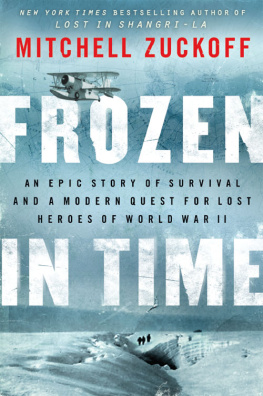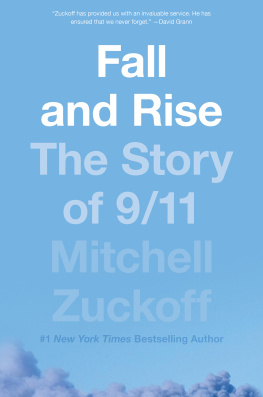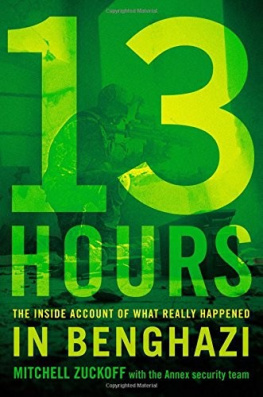Mitchell Zuckoff - Ponzis Scheme: The True Story of a Financial Legend
Here you can read online Mitchell Zuckoff - Ponzis Scheme: The True Story of a Financial Legend full text of the book (entire story) in english for free. Download pdf and epub, get meaning, cover and reviews about this ebook. year: 2005, publisher: Random House, genre: Detective and thriller. Description of the work, (preface) as well as reviews are available. Best literature library LitArk.com created for fans of good reading and offers a wide selection of genres:
Romance novel
Science fiction
Adventure
Detective
Science
History
Home and family
Prose
Art
Politics
Computer
Non-fiction
Religion
Business
Children
Humor
Choose a favorite category and find really read worthwhile books. Enjoy immersion in the world of imagination, feel the emotions of the characters or learn something new for yourself, make an fascinating discovery.

- Book:Ponzis Scheme: The True Story of a Financial Legend
- Author:
- Publisher:Random House
- Genre:
- Year:2005
- Rating:5 / 5
- Favourites:Add to favourites
- Your mark:
- 100
- 1
- 2
- 3
- 4
- 5
Ponzis Scheme: The True Story of a Financial Legend: summary, description and annotation
We offer to read an annotation, description, summary or preface (depends on what the author of the book "Ponzis Scheme: The True Story of a Financial Legend" wrote himself). If you haven't found the necessary information about the book — write in the comments, we will try to find it.
Ponzis Scheme: The True Story of a Financial Legend — read online for free the complete book (whole text) full work
Below is the text of the book, divided by pages. System saving the place of the last page read, allows you to conveniently read the book "Ponzis Scheme: The True Story of a Financial Legend" online for free, without having to search again every time where you left off. Put a bookmark, and you can go to the page where you finished reading at any time.
Font size:
Interval:
Bookmark:

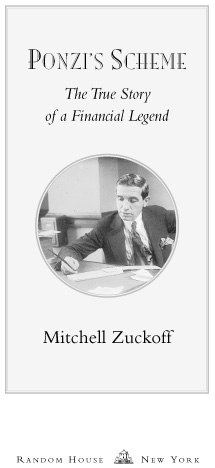
CONTENTS
For my father
PROLOGUE
O n June 9, 1920, a smooth-talking salesman named Martin Kolega went door-to-door in South Boston, Massachusetts, demon-strating a double-your-money machine small enough to fit on a sewing table. When Kolega knocked at the modest home of Mrs. Blanche Crasco, she welcomed him inside. But Mrs. Crasco was no fool. She wanted proof that the marvelous appliance worked. Kolega happily obliged.
No one could deny that the machine was a wonder. Encased in an enameled metal box, it sported flashing lights and a revolving board dotted with what looked like typewriter keys. In a darkened room, Kolega inserted into the box a hundred-dollar bill and a blank sheet of paper cut to the same size. Lights flickered, gears turned, and the box emitted a mysterious whirring sound. After a long minute of anticipation, Kolega pressed a button and, miraculously, two genuine hundred-dollar bills emerged.
Mrs. Crasco was sold.
Kolega pocketed her moneythe $540 was enough for Mrs. Crasco to buy a car, but it seemed worth it for the endless stream of hundred-dollar bills the machine was sure to produce. In exchange, Kolega handed Mrs. Crasco a package wrapped in brown paper. Allowing for time to escape, Kolega warned her not to open it until nightfall, to be certain she did not expose the special duplicating paper to light. He left. She waited.
When Mrs. Crasco opened the bundle, she found a plain wooden box. Realizing that she had been duped, she called the police.
Oddly enough, a gullible newspaper reporter writing about the arrest of Kolega and an accomplice seemed to believe that Mrs. Crasco had been sold a fake version of a truly wondrous device. It is alleged, the reporter wrote, that the men reserved one machine for demonstration and sold their customers dummy affairs.
In other words, had Kolega only been kind enough to sell Mrs. Crasco a working copy of the splendid contraption, everyone would be happy and he would not be in jail.
In 1920, anything seemed possible. Especially when it came to money.
A new ethos was emerging, one that would reshape what it meant to be an American. No more pennies saved and pennies earned. Money was best when it arrived fast, easy, and in large quantities. Newspapers fueled dreams of prosperity with stories of poor girls marrying rich men, inherited fortunes from long-lost relatives, and fearless entrepreneurs whod hit it big. The message was clear: No longer was prosperity the preserve of the well-born; even the laborer and the charwoman could aspire to the manor. All it took was the right break, the right knock at the door. And if wealth did not come knocking, go get it yourself. Plunge into dark waters in pursuit of sunken treasure. Never mind the shallow bottoms.
For promoters of instant assets, it was a time when it paid to think big. Kolega was a small-timer, quickly behind bars, his name soon forgotten. But at the same time, in the same city, a smiling, cane-twirling banty rooster of a man had a better idea for doubling moneya secret formula for financial alchemy that could transform penny stamps into millions of dollars. Admirers hailed him as a wizard, critics branded him a fraud. Either way, he arrived on the scene at the perfect moment. His amazing run would mark the first roar of the 1920s, and his name would live on forever.
PART ONE
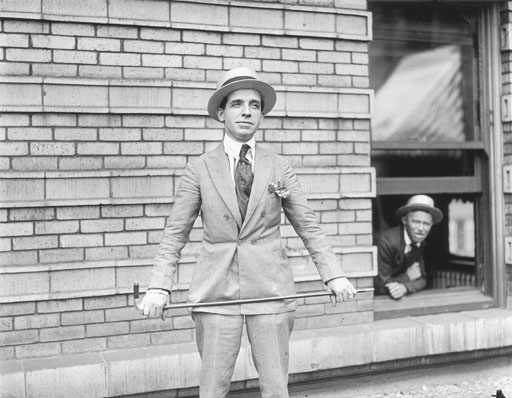
Ponzi displays his fancy walking stick in a pose fit for a drum major.
Boston Public Library, Print Department
CHAPTER ONE
IM THE MAN.
T he huge blue car moved slowly through the crooked streets of the old city, its owner sitting on the wide rear seat, his bottom comforted by deep, horsehair-filled cushions that absorbed the bumps from the uneven cobblestones. Heat and sunlight bounced off the brick and granite buildings, baking the Locomobile limousine and broiling its passengers. The morning air bristled with the hint of a developing thunderstorm. When the skies broke loose it would be a welcome relief from the weeks of summer heat that had made downtown Boston ripe with the smells of horses, fish, fruit, fresh-cut leather, and tight-wound rope, all seasoned by salt from the nearby harbor.
At the wheel of the hand-polished Locomobile was a young Irish immigrant named John Collins, wearing the hat and brass-buttoned uniform of a newly created job: motorcar chauffeur. His boss, an Italian immigrant, had taken delivery of the dazzling vehicle only three weeks earlier, paying a thousand dollars in cash above the $12,600 list price to spirit it away from the New York financier for whom it had been custom-built. For the same price a man could own twenty Model Ts, with enough change to buy a modest house. But what was the point of that? In 1920, the Locomobile was the most expensive car in America, dripping with luxury, from its sterling-silver trim to its crystal bud vases. Purring, glistening Locomobiles filled the garages of Carnegies and Vanderbilts, and General John J. Black Jack Pershing, commander of American forces in the Great War, had shipped his to France for use as a staff car. The executives at the Locomobile Company of America understood that exclusivity appealed to the elites. They had positioned their automobile in direct opposition to Henry Fords backfiring rattletrap of the masses. The companys ads, with the look of engraved invitations, stated that Locomobiles were built by hand in strictly limited quantities because the making of any pre-eminently fine article is impossible on a large scale.
In the short time he had been driving the car, Collins had learned well the daily twelve-mile route that began at his bosss gracious home in the historic suburb of Lexington, less than a mile from the site of the first skirmish of the Revolutionary War. From there, they rolled east through working-class Arlington and Somerville, into tony Cambridge, across the Charles River, then down Tremont Street to a nondescript building on School Street, less than a block from Boston City Hall. Occasionally there would be detours, most often to a bank, and the boss would use the one-way intercom from the back seat to relay the new directions to Collins. But on this dayJuly 24, 1920it was straight from home to office.
Collins slowed as he turned down School Street and saw what awaited them: a mob of several hundred men and women, crowded together hip to hip, chest to back. Viewed from above, it looked like an abstract mosaic of straw boaters and colorful felt cloche hats, punctuated by the dark crowns of a few bowlers. Some in the throng had brought bewildered children, who cried or whined as they struggled to avoid being trampled underfoot. The street was alive with electricity unrelated to the gathering thunderclouds. It came from the horde itself. Each member was a charged electron jittering in a magnetic field created by the man in the back seat of the Locomobile.
The street normally would have been all but deserted on a sultry Saturday in late July. But this was no ordinary day. When the crowd saw the limousine turn down the street they pressed toward it, half in reverence and half in mindless desire. They parted to allow Collins to steer toward the curb in front of the Niles Building, at 27 School Street, the modest home of his bosss extravagantly immodest firm, the impressively named Securities Exchange Company.
Next pageFont size:
Interval:
Bookmark:
Similar books «Ponzis Scheme: The True Story of a Financial Legend»
Look at similar books to Ponzis Scheme: The True Story of a Financial Legend. We have selected literature similar in name and meaning in the hope of providing readers with more options to find new, interesting, not yet read works.
Discussion, reviews of the book Ponzis Scheme: The True Story of a Financial Legend and just readers' own opinions. Leave your comments, write what you think about the work, its meaning or the main characters. Specify what exactly you liked and what you didn't like, and why you think so.

